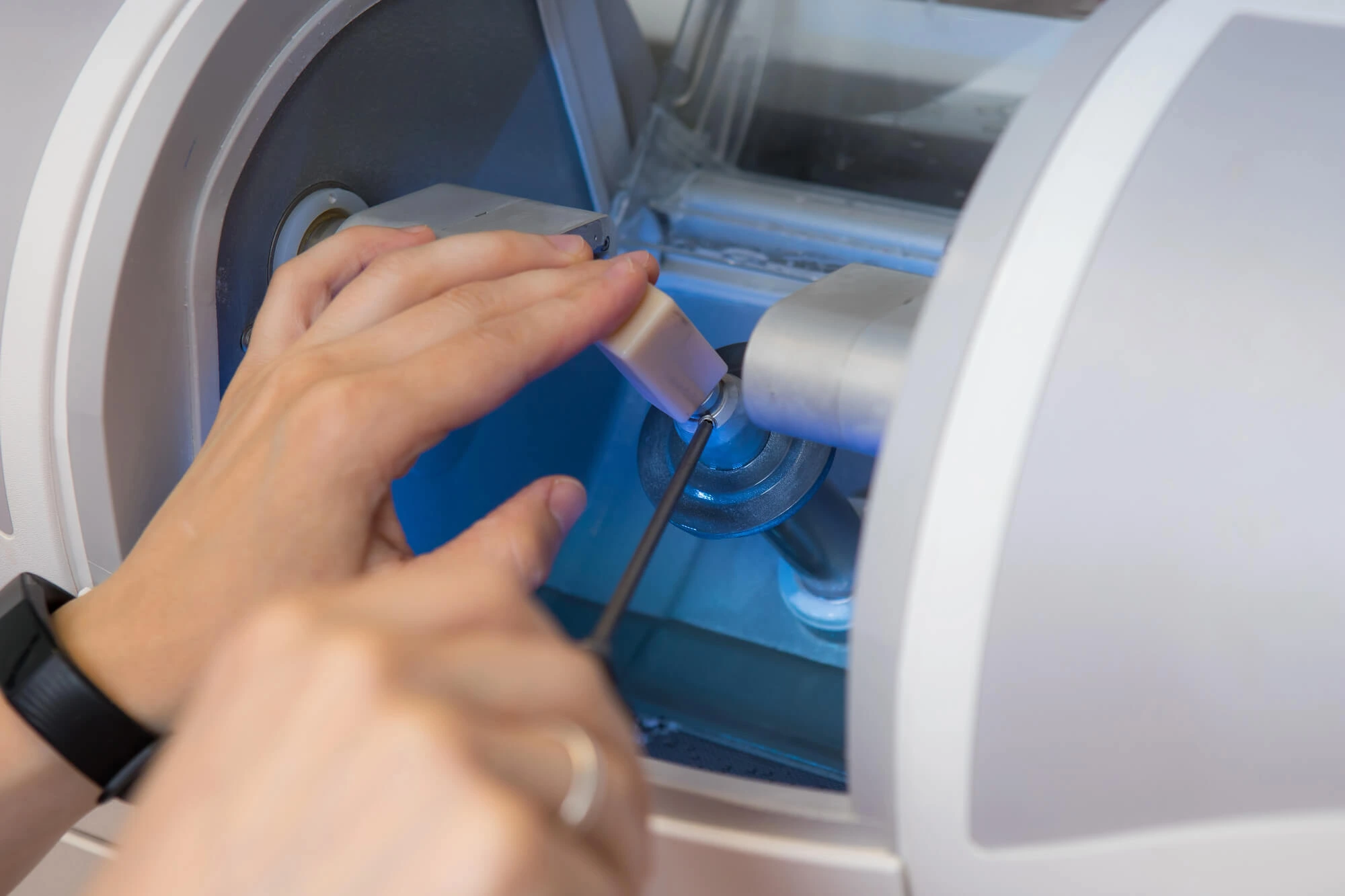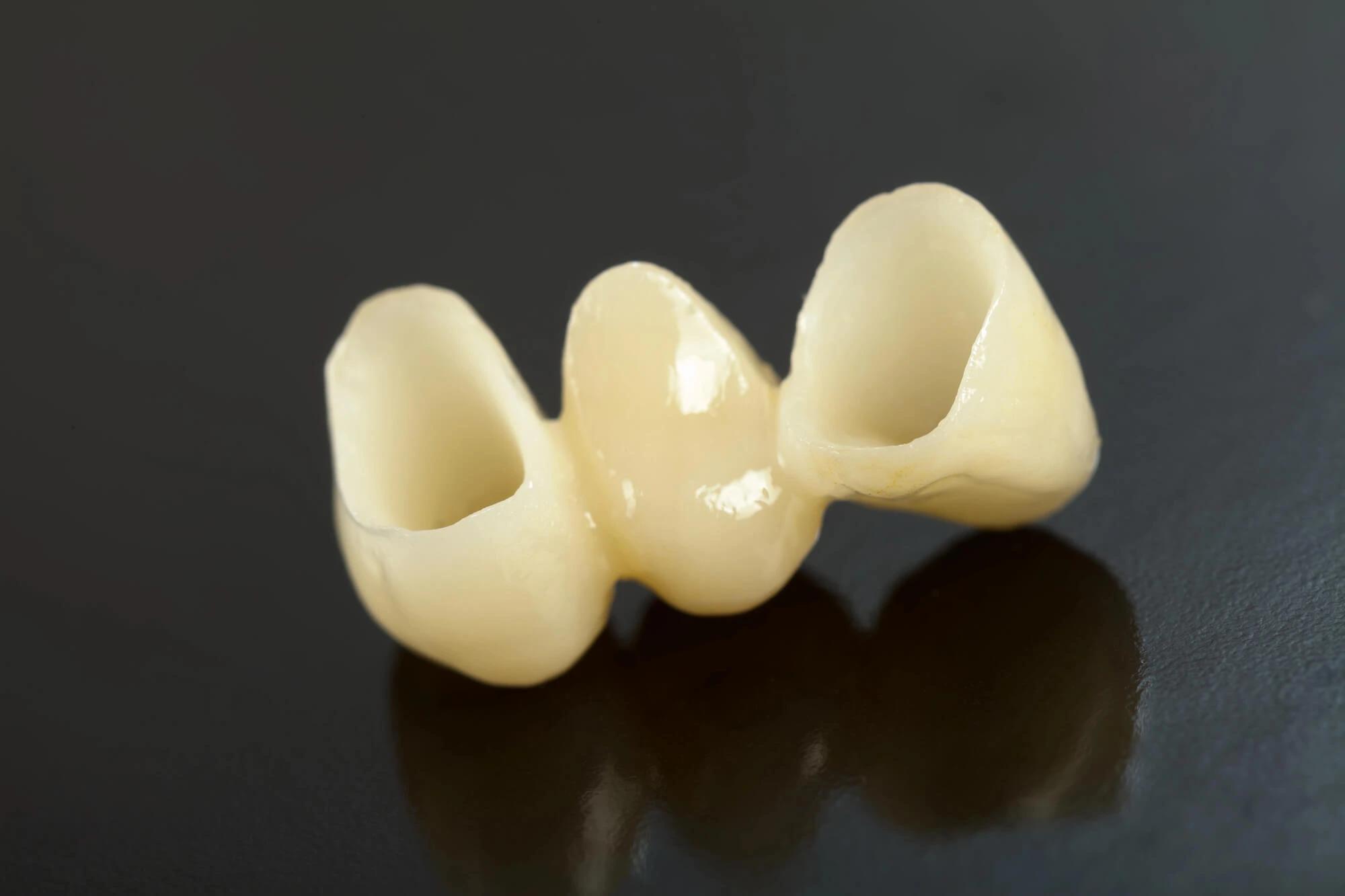In today’s world of modern restorative dentistry, patients demand more than just function—they want beauty, biocompatibility, and longevity. That’s where Coral Gables Dentistry’s all-ceramic restorations come in. Whether you're repairing a single tooth or reconstructing a full smile, the materials you choose matter, and ceramic has proven to be one of the most resilient options to strengthen your smile.
Increasingly, dentists and patients alike are turning to all-ceramic options. By understanding what all-ceramic restorations are and how they differ from traditional materials, you’ll see why they’re considered a gold standard in contemporary cosmetic and restorative dentistry.

All-ceramic restorations are dental prosthetics (like dental crowns, bridges, and veneers) made entirely from ceramic materials—that is, without the use of any metal.
Unlike porcelain-fused-to-metal (PFM) restorations, which contain a metal substructure beneath a porcelain layer, all-ceramic restorations are metal-free. This allows for greater light transmission, giving them a translucency and aesthetic quality nearly identical to natural enamel.
Some types of all-ceramic materials used in dentistry include:
Depending on the type of restoration needed and the location of the tooth, each material offers different benefits.
Nowadays, there’s a widespread agreement in the dental community that ceramic restorations are the best among alternative options. But what advantages does this material offer?
One of the biggest advantages of all-ceramic restorations is their natural appearance. Because they are metal-free, light can pass through them just as it does with natural enamel. This gives them an unparalleled natural look and makes them especially ideal for restorations in the esthetic zone, or the visible front teeth.
Unlike PFM crowns that may show a dark metal line at the gumline, all-ceramic crowns blend seamlessly with the surrounding teeth, even if the gums recede slightly over time.
For patients seeking lifelike beauty and color-matching accuracy, all-ceramic restorations are unmatched in their realism and precision.
All-ceramic materials are biocompatible, meaning they are less likely to cause allergic reactions or irritation to the surrounding gums and oral tissues. On the other hand, metal-based restorations can sometimes lead to hypersensitivity or inflammation.
For example, zirconia has been shown to promote healthy soft tissue response, making it ideal for patients with sensitivities to metal or a history of periodontal issues. Moreover, studies have shown that zirconia and lithium disilicate restorations accumulate less plaque compared to metal-based alternatives.
Today’s advanced ceramic materials are not only aesthetically pleasing but also exceptionally strong. Monolithic zirconia offers exceptional fracture resistance and is suitable for both anterior and posterior restorations, even for patients with bruxism (teeth grinding).
On the other hand, lithium disilicate combines excellent strength with high translucency, making it a favorite for veneers and crowns in esthetically demanding cases. With proper design, preparation, and bonding, many all-ceramic restorations can last 10–15 years or more.
Almost all ceramic restorations today are fabricated using CAD/CAM (Computer-Aided Design/Manufacturing) systems. This method involves taking digital impressions of your mouth to send to an in-office milling machine that can create a precise, natural-looking restoration in minutes.
For patients, this means no uncomfortable goopy molds, faster turnaround times, and fewer adjustments. It also eliminates the need for temporary restorations, resulting in lower overall costs.
This digital workflow ensures a precise, custom fit and enhances the overall patient experience.
Some patients develop allergic reactions to the nickel or other base metals used in traditional PFM crowns. All-ceramic restorations eliminate this risk.
Additionally, metal restorations can sometimes lead to a grayish discoloration of the gums over time, particularly in patients with thin gingival tissue. All-ceramic materials do not discolor soft tissue, preserving the natural appearance of the gumline.
When evaluating why all-ceramic restorations stand out in modern dentistry, it's important to compare them directly with other widely used restorative materials.
Each material brings its own set of strengths and limitations. Still, when weighed against all-ceramic options, the differences become increasingly clear—especially for patients prioritizing aesthetics, biocompatibility, and long-term performance.
Porcelain-fused-to-metal (PFM) restorations have long been considered a staple in restorative dentistry. They combine a metal substructure with a porcelain overlay, offering a balance between durability and appearance.
However, PFMs fall short in replicating the translucency and natural aesthetics of enamel. The underlying metal often casts a gray shadow at the gumline, particularly as the gums recede with age. In contrast, all-ceramic restorations are metal-free and allow light to pass through them similarly to natural teeth, resulting in a far more lifelike and seamless appearance.
Additionally, patients with metal sensitivities may experience irritation or allergic reactions with PFMs. This issue can be completely avoided with all-ceramic materials, which are known for their excellent tissue compatibility.
Composite resin is another common alternative, often selected for its affordability and ability to blend with the surrounding tooth structure. It’s a go-to choice for small fillings or cosmetic touch-ups, especially in anterior teeth.
However, while composites offer convenience and aesthetic potential, they lack the durability and stain resistance of ceramics. Over time, composite materials can discolor and wear down, especially in areas subject to significant biting forces.
By contrast, all-ceramic restorations maintain their appearance for many years. They are significantly more resistant to both wear and discoloration. Their strength, especially in formulations like zirconia or lithium disilicate, allows them to function well in both front and back teeth. Composites struggle to do this over the long term.
Amalgam is a metal alloy made of silver, mercury, tin, and other elements. It has been used in dentistry for over 150 years, although its use has declined significantly in recent years.
Known for its exceptional strength and longevity, amalgam has historically been the material of choice for large posterior restorations. However, its metallic color makes it cosmetically unappealing. Its composition, which includes mercury, can also raise safety concerns among patients.
In contrast, all-ceramic restorations offer a completely metal-free solution, eliminating any concern about mercury exposure. More importantly for today’s patients, ceramics restore teeth in a way that is virtually indistinguishable from natural dentition. This is a feature that amalgam cannot achieve.
Gold restorations represent another traditional option, favored for their strength, precision, and longevity. Gold is highly durable, doesn’t wear down opposing teeth, and is well tolerated by the body.
However, despite these clinical advantages, gold restorations are highly visible and offer none of the natural aesthetics that patients typically seek today.
In an age where patients increasingly desire restorations that both function well and appear aesthetically pleasing, gold has become less desirable. This is particularly convenient in areas of the mouth that are visible when smiling or speaking.
All-ceramic materials offer the advantage of both beauty and function. Modern ceramics can rival gold in terms of durability, especially in monolithic zirconia applications, and are far superior in their ability to mimic the appearance of real teeth.

All-ceramic materials are incredibly versatile, offering durable and aesthetically pleasing solutions for a wide range of restorative and cosmetic dental needs. Their adaptability allows dentists to tailor treatments based on the location, function, and esthetic demands of each tooth.
Some common applications of this material in dentistry include:
All-ceramic crowns are used to restore the shape, strength, and appearance of a damaged or decayed tooth. They provide a natural look that blends seamlessly with surrounding teeth.
In cases where one or two adjacent teeth are missing, all-ceramic bridges provide a metal-free solution to replace them. They’re securely anchored to the neighboring natural teeth for both function and aesthetics.
Thin shells of ceramic are bonded to the front surfaces of teeth to correct discoloration, shape, size, or alignment issues. These restorations dramatically improve the appearance of the smile with minimal alteration to the teeth.
These partial restorations are custom-crafted to repair damaged or decayed areas within a tooth, while preserving as much natural structure as possible. This approach provides a stronger and more durable alternative to traditional fillings.
When restoring dental implants, all-ceramic crowns provide a lifelike and durable prosthetic that closely mimics the form and function of natural teeth, especially important in the esthetic zone.
While all-ceramic restorations offer numerous benefits, they are not a one-size-fits-all solution. Some factors to consider include:
However, with careful case selection and expert planning, these limitations can be addressed effectively.

All-ceramic restorations are growing in popularity among the American public. This material not only functions flawlessly, but it also looks indistinguishable from natural teeth.
If you're looking for beautifully crafted, natural-looking dental restorations, Coral Gables Dentistry can help. Combining leading-edge technology and advanced materials with personalized care, our expert team is here to help you achieve a healthier, more confident smile with solutions tailored just for you. Contact us today to schedule an appointment!

We value your time, so we always run on schedule, respecting your commitments, with no double bookings and minimal wait times. Experience dentistry like never before in our award-winning clinic.






